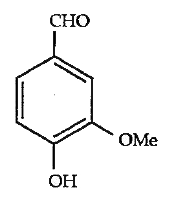Question from NAGEEN CHEMISTRY (ENGLISH) Chapter 051:SAMPLE QUESTION PAPER for Class 11
| Class 11 | CHEMISTRY |
| Chapter | SAMPLE QUESTION PAPER |
| NAGEEN CHEMISTRY (ENGLISH) | Question |
| Medium | English |
| Academic Year | 2023-2024 |
Question 2
Fill in the blanks by choosing the appropriate word/words from those given in the brackets: (completely filled shells, C-H, Zeeman.s effect, propene, very low, half-filled shells, spin, magnetic, propane, explosively, cyclopropane, C-C, very high, propyne)
Nobles gases possess ______ values of ionisation energies due to the presence of _______View SolutionQuestion 3
Fill in the blanks by choosing the appropriate word/words from those given in the brackets: (completely filled shells, C-H, Zeeman.s effect, propene, very low, half-filled shells, spin, magnetic, propane, explosively, cyclopropane, C-C, very high, propyne)
The ring-chain isomers possible with the molecular formula C3H6 are _______and _______View SolutionQuestion 36
The energy of σ2pz, molecular orbital is greater than π2px and π2py molecular orbitals in nitrogen molecule. Write the complete sequence of energy levels in the increasing order of energy in the molecule. Compare the relative stability and the magnetic behaviour of the following species.
N2,N+2,N−2,N2+2View SolutionQuestion 37
The energy of σ2pz, molecular orbital is greater than π2px and π2py molecular orbitals in nitrogen molecule. Write the complete sequence of energy levels in the increasing order of energy in the molecule. Compare the relative stability and the magnetic behaviour of the following species.
N2,N+2,N−2,N2+2View SolutionQuestion 61
In Ostwald’s process for the manufacture of nitric acid, the first step involves the oxidation of ammonia gas by oxygen gas to give nitric oxide gas and steam. What is the maximum weight of nitric oxide that can be obtained starting only with 10.00 g. of ammonia and 20.00 g of oxygen ?View SolutionQuestion 65
The alkyl halide C4H9Br(A) reacts with alcoholic KOH and gives an alkene (B) which reacts with bromine to give a dibromide (C). (C) is transformed with sodamide into a gas (D) which forms a precipitate when passed through ammoniacal silver nitrate solution. Give the structural formulae of the compounds (A), (B), (C) and (D) and explain the reactions involved.View SolutionQuestion 66
One mole of nitrogen is mixed with three moles of hydrogen in a 4 litre container. If 0.25 per cent of nitrogen is converted into ammonia by the following reaction
N2(g)+3H2⇔2NH3(g)
calculate the equilibrium constant of the reaction in concentration units. What will be the value of K for the following reaction?
12N2(g)+32H2⇔NH3(g) View Solution


